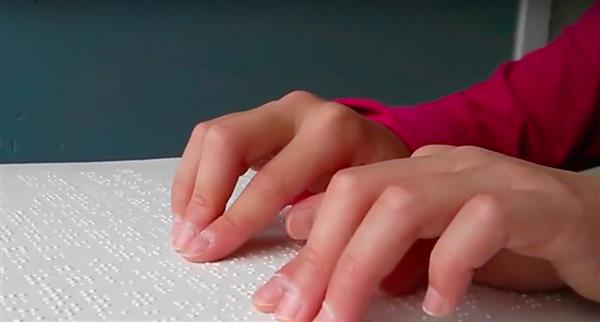3D Prints for Teachers of the Visually Impaired

"3D Printing for Teachers of the Visually Impaired" has a goal to document simple, practical conventions for designing models, and lay the ground work so that interested parties can create the needed designs.
Students with visual impairments have difficulty with concepts based on visual/spatial relationships, particularly in Math and Science. As 3D Printers continue to become a common place in the classroom, offering an unprecedented assets for teachers and students, teachers are often faced with the challenge of what to do with the 3D Printer?
This project creates a open-source way to link teachers who need design files and designers who want projects to do. Schools who want to have their students do some 3D Pritning serve learning for their students can reply to a request and go off to design and create a design.
 |
"We want students to create the designs for the needed models, learning science, math and other sibjects while helping their visually impaired peers" says Joan Horvath a co-founder of this initiaive "So we are developing a set of guidelines, instructions for readable Braille, and open-source models that follow the guidelines." |
If you or your school is interested in participating in this project, goto 3D Printing for Teachers of the Visually Impaired and become a member.
---------------------------------------------------------------------------------------
Example Print exercise
Ms Horvath shared with us a great example of one of her latest project for the visually impaired.
The picture below shows four geometric shapes that are all of the same volume. A cone has one-third the volume of a cylinder of the same height and base area, so the cylinder is one-third as high as a cone with the same base area.

Students can prove this to themselves by filling one with water or sand and pouring its contents to another.
Ms Horvath worked with a test teacher of the visually impaired, Lore Schindler who liked that the model were hollow and allowed students to fill them with water or sand to discover that the volumes of the objects in the set had the same volume.
Ms Horvath and her team added a removable lid on each of the hollow models which allowed Ms Schindler's students to close the models , enabling them to feel the object with its missing side present.
You can download the files from Ultimakers' Youmagine website.



Understanding the Maths
According to Cavalieri's Principle , a cone and a pyramid that have the same height and base area as each other have the same volume.
How did the team calculate the area of the pyramid base? The little drawing here reviews the math to analyse the area of the base. Imagine the triangle shown here, which has three sides all of length s and is of an unknown height X.

If Pythagorean theorem us used, x=s*sqrt(3)/2. The area then is S^2*sqrt(3)/4
So inorder to make the area of the circular base of the cone and the cylinder the same, they use the apothem. Apothem is the distance from the centre of any regular polygon to a side, measured perpendicular to that side above. In the case of a triangle it will be the length of a line connecting that side to the centre.
So instead of considering our triangular base as just one triangle, now it makes more sense to think of it as three triangles (because any regular n-sided polygon can be though of as being made up of n identical isosceles triangles.) A square becomes four triangles, a hexagon six , the area of each of these is the apothem times half its base. You can get the apothem length by determining the angle A at the centre of the polygon, which is 180 degrees/n. The apothem will be the s/2*tangent(A)

For regular polygons with n sides, the area is n * s * s / (4 * tan(180/n)), which also happens to be half the perimeter times the apothem. To see this, note that the area equals perimeter * apothem / 2, since the apothem is s / (2 * tan(180/n)) and the perimeter is n * s.
As the number of sides increases, a regular polygon gets rounder and approaches a circle. As this happens, the apothem and radius (the distance from the center to any corner, in the case of a polygon) converge toward the same value, and the perimeter asymptotically approaches 2 * pi * r. This means that the area is (1/2) * (2 * pi * r) * r, which simplifies to pi * r^2.
"Unrolling" the triangles into a rectangle as shown below, where the area of the whole rectangle is the perimeter times the apothem, so the area of the triangles making up the polygon is half that.

Source and all images courtesy 3D Printing for Teachers of the Visually Impaired
Disclaimers: The content of the webinars, podcasts, videos, etc contained on, linked by or referred to on this page may have been created and/or owned by the relevant brand owners or other third parties. As such, Imaginables cannot warrant or make any representation as to the content's suitability or reliability.

